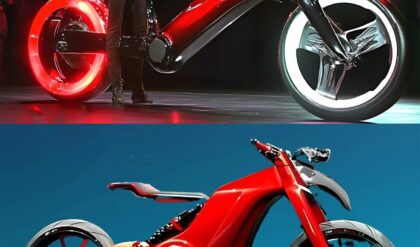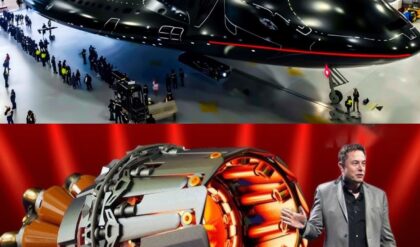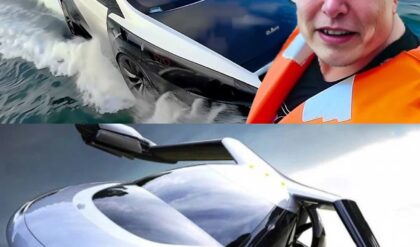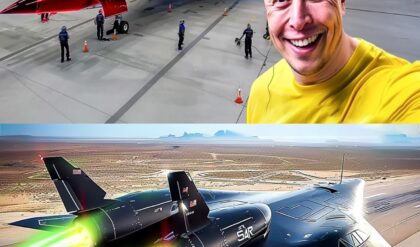
T-Gewehr M1918 – The World’s First Anti-Tank Rifle
To counter the shock reveal of the tank by Britain in 1916, Germany began the development of a super-sized rifle for the purpose of bringing them down. The result was the Tankgewehr M1918, better known as the T-Gewehr, the father of all anti-tank rifles ever since.
This monstrous gun was four times heavier than Germany’s standard infantry rifle, and fired a round that was even bigger than the .50 BMG. Issued to specially trained anti-tank teams, the T-Gewehr stands as history’s first dedicated anti-tank rifle ever.
Origin
The development of the Tankgewehr M1918 was a direct response to the deployment of British tanks in 1916, which presented an entirely new threat that had the ability to break the stalemate on the Western Front.
The British Mark I, the world’s first combat tank, was capable of crossing trenches, navigating crater-ridden battlefields, and providing a mobile platform for machine guns, all while being protected against small arms fire.
As the tank was literally brand new, there were no dedicated anti-tank weapons available to counter them.
 A British Mark I tank, the first tank in history to see combat.
A British Mark I tank, the first tank in history to see combat.
Instead, Germany responded with a number of improvised means of killing them, including field guns repurposed into direct fire weapons, explosives, and armor piercing ammunition for small arms.
Other methods, like widening trenches, were also employed. While the first tanks were found to be vulnerable to these improvisations, Germany still sought a proper anti-tank weapon.
In late 1917, the task was assigned to the renowned German arms manufacturer, Mauser. Mauser’s engineers had to create a weapon that could penetrate the armor of First World War tanks, which typically ranged from 6mm to 12mm in thickness, hardened all the way through.
They would do this by using a new, large-caliber cartridge, the 13.2mm TuF (Tank und Flieger, meaning “tanks and aircraft”).
 Comparison of a standard British .303 rifle cartridge (left) and a German 13.2 mm TuF cartridge fired Mauser Tankgewehr M1918 (right).
Comparison of a standard British .303 rifle cartridge (left) and a German 13.2 mm TuF cartridge fired Mauser Tankgewehr M1918 (right).
As indicated by the name, this round was designed for use against aircraft and tanks. For the anti-aircraft role, it was planned to be fired from the MG 18 TuF machine gun.
The weapon that would fire the round was a bolt action rife that used a Mauser action. To save on time and resources, it was essentially a scaled up Mauser 98.
Incredibly, Mauser was able to get a prototype ready by January 1918, with production starting shortly after. The rifle was named the Tankgewehr M1918 (meaning tank gun), better known as the T-Gewehr.
 The T-Gewehr M1918. Image by Rama CC BY-SA 2.0 fr.
The T-Gewehr M1918. Image by Rama CC BY-SA 2.0 fr.
Design of the T-Gewehr
The Tankgewehr M1918 was a remarkable weapon for its time, designed specifically to engage and penetrate the armor of tanks. This was a novel requirement for the period, but despite this, the rifle achieved it.
Central to the T-Gewehr’s design was its use of the 13.2mm TuF cartridge. This cartridge was exceptionally large for a rifle, sporting a 51 gram, steel cored, armor piercing projectile that travelled at around 800 meters per second.
Its speed and weight gave it significant kinetic energy upon firing, which enabled it to penetrate armor up to 15mm thick at ranges up to 300 meters. At 100 meters it could penetrate around 20 mm of armor.
 The 13.2 mm TuF cartridge.
The 13.2 mm TuF cartridge.
Of course, such a powerful cartridge required a hefty weapon capable of withstanding the immense forces involved in firing it. As a result, the rifle was huge!
It measured 1.7 meters (5 ft 7 in) in length and weighed 16 kilograms (35 lbs).
This meant it was around four times heavier than a standard Mauser 98! The weight increased further to 18.5 kg when fitted with a bipod (taken from the MG 08/15).
 A captured T-Gewehr anti-tank rifle compared with a British Lee-Enfield rifle.
A captured T-Gewehr anti-tank rifle compared with a British Lee-Enfield rifle.
A bipod was necessary too, as there were no recoil-reducing measures other than the sheer mass of the rifle itself. There was no muzzle brake or cushioned shoulder pads here, just a barrel and wooden stock.
The rifle was equipped with a simple iron sight, reflecting its intended use at relatively short ranges against large, slow-moving targets.
The T-Gewehr used a bolt-action mechanism, common in rifles of the period. However unlike rifles such as the Mauser 98 or Lee Enfield SMLE, it could only hold one round at a time. After each shot, the shooter had to manually cycle the bolt to eject the spent cartridge and chamber a new round.
For the user’s grip, the T-Gewehr was furnished with a wooden stock, complete with a novel pistol grip by the trigger.
 New Zealand gunners with a captured T-Gewehr, early 1918. Note the enormity of the rifle.
New Zealand gunners with a captured T-Gewehr, early 1918. Note the enormity of the rifle.
Service History
Upon its introduction in early 1918, the German Army distributed the T-Gewehr to specially trained units.
These units were tasked with targeting enemy tanks, exploiting the weapon’s capability to penetrate armor at relatively close ranges.
Operators of the T-Gewehr worked in pairs or small teams, often positioned in forward or concealed locations, where they could ambush approaching tanks and support each other.
 A German T-Gewehr anti-tank rifle team in 1918. Both were trained to fire the rifle.
A German T-Gewehr anti-tank rifle team in 1918. Both were trained to fire the rifle.
They were trained to fire at certain areas of tanks, such as the tracks, fuel tanks or crew positions, to increase the chances of a fatal blow.
Even if a T-Gewehr failed to fully penetrate an incoming tank’s armor, it was likely to cause spalling on the inside, sending small metal flakes and fragments flying around at high velocities.
The power of the T-Gewehr, while limited in comparison to later anti-tank weapons, offered a superior solution over close-range weapons like grenades, or smaller caliber armor piercing rifle rounds.
Of course, as the first ever dedicated anti-tank weapon, the T-Gewehr had its limitations.
The most obvious was its heavy weight and large size, which made it difficult to maneuver, and required the shooter to be laying down, or mounted on something solid like a wall or trench.
The significant recoil also posed a challenge to operators. It was so strong, and with no recoil-reducing aids, that its users would tire quickly after a few shots.
 T-Gewehr next to an M16.
T-Gewehr next to an M16.
Finally, the weapon’s single-shot action meant a slow rate of fire, requiring precision and exposing operators to incoming fire longer.
Still, it wasn’t a bad effort for a first go; the rifle was literally and figuratively the starting gun for the anti-tank weapon arms race that continues today.
In total, an impressive 16,900 T-Gewehrs were made over its year long production run.
 The size of the rifle made it unwieldy.
The size of the rifle made it unwieldy.
They were soon made obsolete by newer, better protected tanks, but many nations were eager to get their hands on the rifles to examine or even copy them. Small numbers served with countries around the world, including China, Finland and the USSR.
Today the T-Gewehr is remembered as the father of the anti-tank and anti-material rifles. In the century since its introduction, new weapons have been designed to counter essentially the same problem, and continue to be used today.





